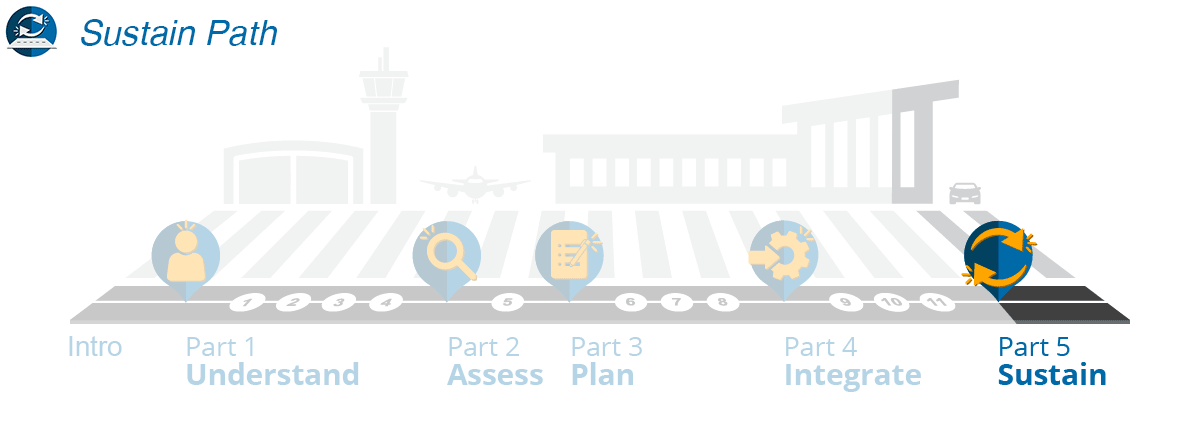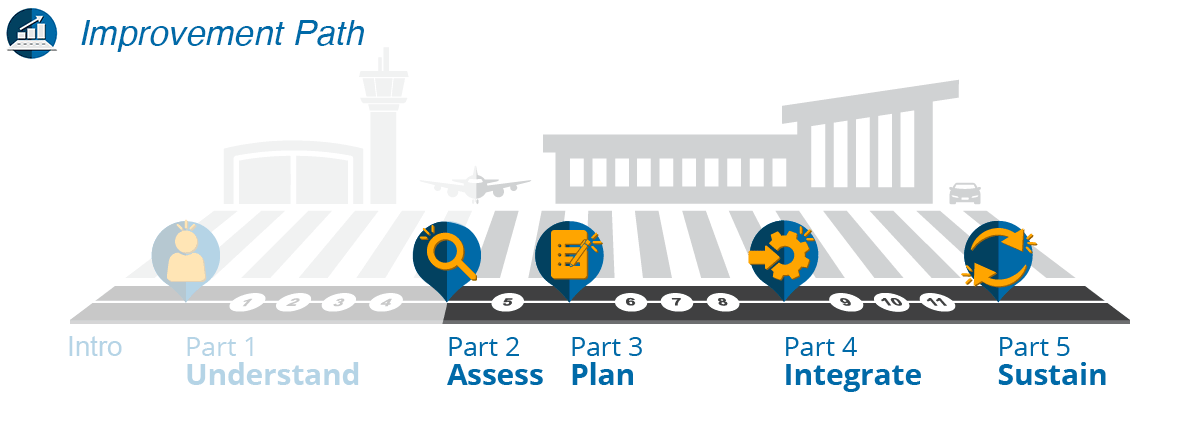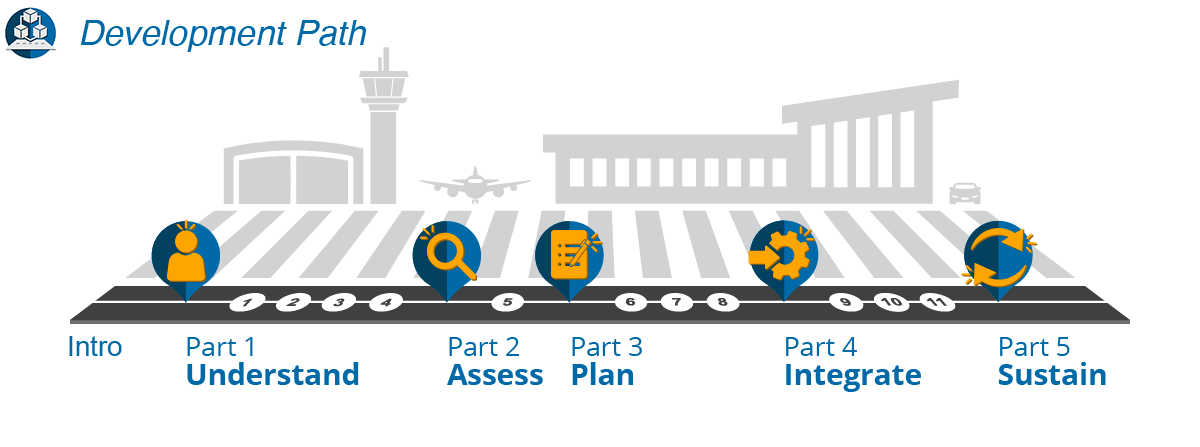
Step 10: Establish the Social Media Operating Framework
Day-to-Day Operational Considerations
If you have read each step in this WebResource, you know that establishing your community team in a collaborative manner is a concept we heavily stress throughout. This section covers the day-to-day operational aspects of your plan, including the best practices that support collaborative response and operational considerations. This also includes the integration of listening and reporting as contributors to your baseline of “what’s normal” so you can spot the abnormal.
Collaboration as a Best Practice
To be effective, the SM manager and the EM manager must work in tandem to build an airport's SMEM program. As you develop your program, this same sense of collaboration expands to adjacent functions such as gate, ground, and food/retail services, as well as external groups including local news, municipality first responders, and others. All of these may be contributors to, impacted by, or involved in an emergency or emergency response.
For airport operators, especially those that are regulated under FAA Part 139, it is important to review existing plans, especially those sections that address how you will communicate with first responders and the public. As an airport operator, assess how the use of SM can improve intelligence gathering for the incident commander regarding aircraft alerts, hazmat incidents, crowd control, and major landside events—all of which should be factored into your existing communication plan.
Building a Baseline
Irregular operations (IROPS), severe weather, and localized events such as active shooter and bomb threats are easy to spot after the fact; however, the objective is to spot them as they occur, in real time, and to begin to respond early to minimize any escalation. By building a baseline of “normal” SM operations, you can create a profile against which you can spot a potentially abnormal event in its early stages. For example, you can develop a normal SM listening baseline indicating the rise and fall in SM traffic during the day with varying arrival/departure patterns. By understanding what a normal day “sounds like,” you can more easily spot abnormal SM traffic.
With your baseline in place, evaluate how SM can be leveraged to notify passengers and thereby minimize the impact/spread of events. Which channels are most in use at your facility? Anywhere within your plans and standard operating procedures (SOPs) where communication is identified (e.g., responder call-outs, tenant notifications, terminal pages, etc.), consider opportunities for utilizing SM for added transparency, relevance, and reach.
Tip
In particular for active shooter and similar crises, consider the implementation of a secure back channel. The hostile actor may be monitoring SM to anticipate your next steps, so you will want a secure channel for the purpose of directing your response.




